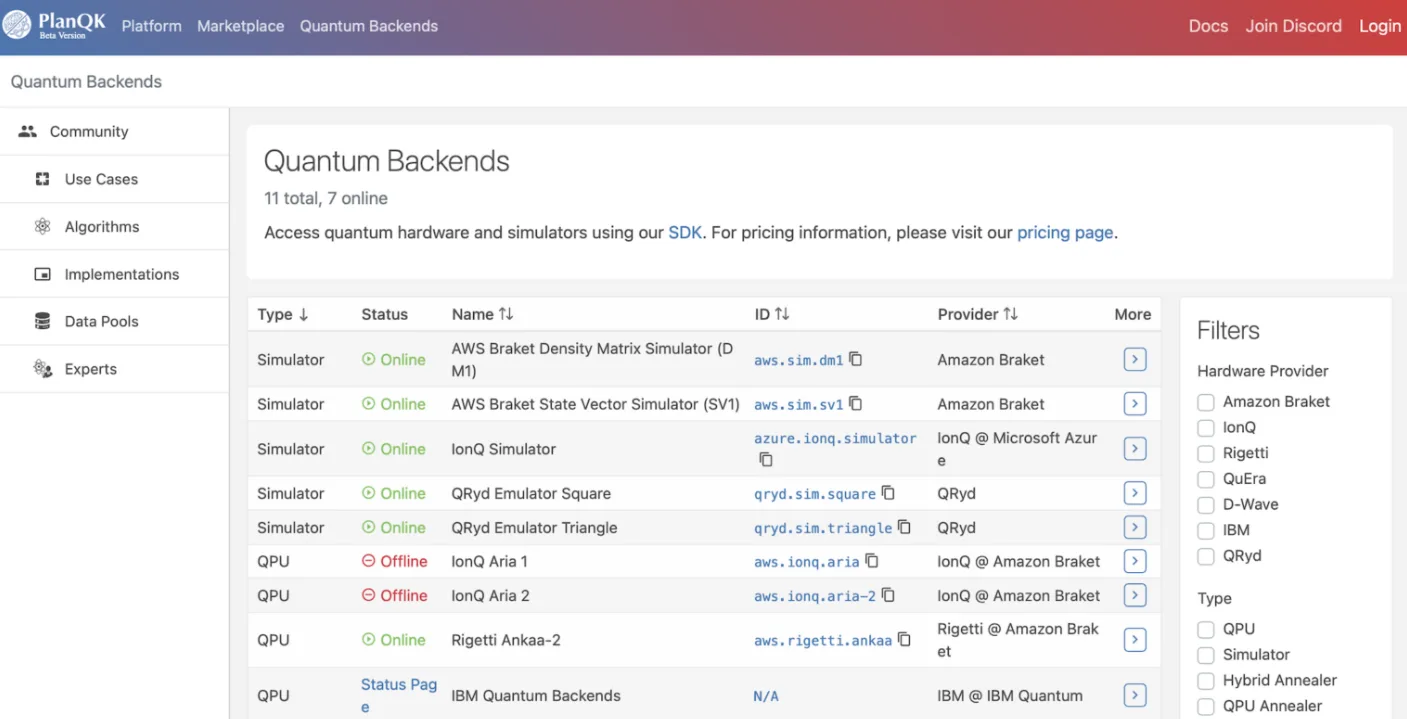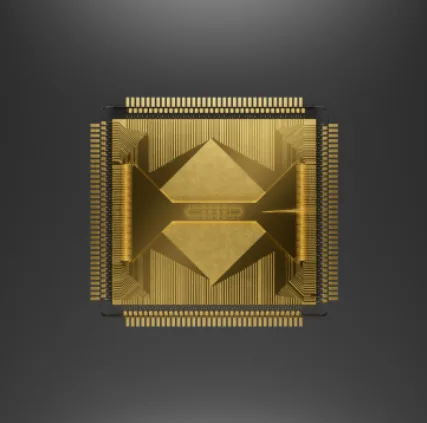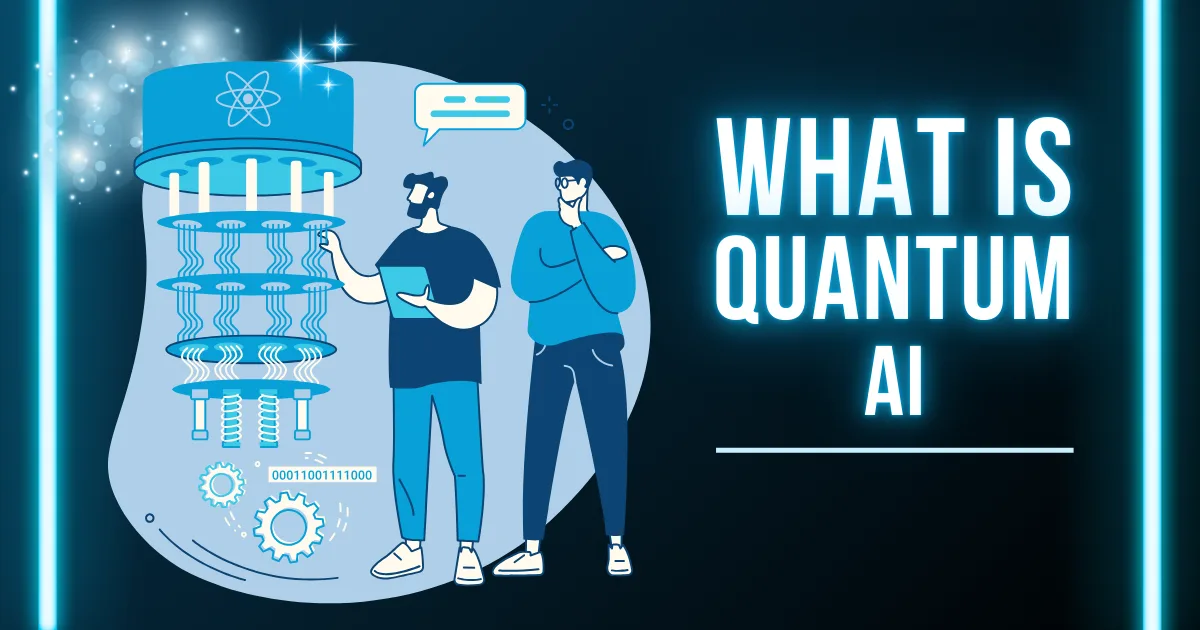The world of technology stands at a pivotal moment as quantum computing and artificial intelligence converge to create what experts call Quantum AI (QAI). This groundbreaking fusion promises to revolutionize everything from drug discovery to financial modeling, ushering in an era of unprecedented computational power. As we venture into 2025, the quantum computing landscape has evolved dramatically, with major tech giants and research institutions pushing the boundaries of what’s possible.
Understanding the Quantum Revolution
To grasp the significance of quantum AI, imagine trying to solve a complex maze. While traditional computers would check each path one at a time, quantum computers can explore all possible paths simultaneously. This extraordinary capability comes from the fundamental principles of quantum mechanics: superposition and entanglement. In superposition, quantum bits (qubits) can exist in multiple states at once, unlike classical bits that can only be either 0 or 1. Entanglement allows these qubits to be interconnected in ways that defy classical physics, enabling computational feats that were once thought impossible.

The quantum computing revolution has accelerated with remarkable breakthroughs in hardware development. Google’s Willow quantum processor represents a significant leap forward in error correction and scalability. By implementing sophisticated error-correction techniques and maintaining qubits at temperatures approaching absolute zero (below 10 millikelvin), the Willow processor achieves unprecedented stability in quantum operations. This advancement marks a crucial step toward practical quantum computing applications.
The Marriage of Quantum Computing and Artificial Intelligence
The integration of quantum computing with artificial intelligence creates a symbiotic relationship that amplifies the strengths of both technologies. Traditional AI algorithms, particularly in deep learning, require enormous computational resources to process complex patterns in data. Quantum AI promises to overcome these limitations by leveraging quantum mechanics to process information in ways that classical computers cannot match.
Consider the process of drug discovery, where pharmaceutical companies must analyze millions of molecular combinations to find potential therapeutic compounds. Classical computers might take years to complete such analysis, but quantum AI systems can evaluate these combinations simultaneously, potentially reducing the discovery timeline from years to months or even weeks. This acceleration in drug development could lead to faster responses to global health challenges and more personalized medicine approaches.
Microsoft’s Quantum Revolution: The Majorana 1 Breakthrough
Microsoft’s recent introduction of the Majorana 1 processor represents more than just another step in quantum computing evolution—it marks a fundamental reimagining of quantum architecture. This breakthrough, announced in early 2025, leverages exotic quantum particles to create what many experts consider the most stable quantum computing platform to date. Unlike conventional quantum computers that rely on superconducting qubits, Microsoft’s revolutionary approach utilizes topological qubits based on Majorana fermions, particles that had been theoretical until this development.
The Science Behind Majorana Fermions
Majorana fermions, first theorized by Italian physicist Ettore Majorana in 1937, possess a unique property that makes them invaluable for quantum computing: they are their own antiparticles. In practical terms, this means these particles can maintain their quantum states much longer than traditional qubits. Microsoft’s researchers achieved this breakthrough by creating specific conditions within specialized nanowires made from a combination of indium antimonide and aluminum superconducting shells. When cooled to near absolute zero and subjected to precise magnetic fields, these nanowires provide the perfect environment for Majorana fermions to emerge and remain stable.

The emergence of Majorana fermions in these nanowires represents what Microsoft calls a “new state of matter.” This isn’t just marketing hyperbole—the company has demonstrated that these particles exist at the endpoints of the nanowires, creating a naturally protected space for quantum information storage. The validation of this phenomenon in peer-reviewed studies published in Nature has silenced many skeptics who questioned the feasibility of topological quantum computing.
Architectural Advantages of Topological Qubits
The significance of Microsoft’s topological approach becomes clear when comparing it to traditional quantum computing architectures:
Inherent Error Protection Traditional quantum computers are notoriously sensitive to environmental interference. Even minimal vibrations, electromagnetic fields, or temperature fluctuations can cause qubits to lose their quantum states—a process called decoherence. Conventional systems address this through extensive error correction codes, often requiring thousands of physical qubits to create a single reliable logical qubit. This overhead has been one of the main obstacles to scaling quantum computers.
Microsoft’s topological qubits, however, encode information in a fundamentally different way. The quantum information is stored in the collective behavior of multiple Majorana fermions, creating what physicists call a “topologically protected state.” This protection isn’t just a shield against noise—it’s built into the very physics of the system. Early tests show that these topological qubits can maintain their quantum states up to 100 times longer than traditional superconducting qubits without additional error correction.
Scalability Breakthrough The Majorana 1 processor’s architecture offers unprecedented scalability potential. Microsoft’s design allows for the fabrication of quantum circuits using methods similar to traditional semiconductor manufacturing. This compatibility with existing fabrication techniques could accelerate the path to large-scale quantum computers. The company’s roadmap suggests the possibility of scaling to millions of topological qubits within the next decade—a goal that seemed almost impossible with conventional architectures.
Real-World Applications and Implications
The stability and scalability of Microsoft’s topological qubits open new possibilities for quantum computing applications:
Quantum Chemistry Simulations The Majorana 1 processor has demonstrated exceptional accuracy in simulating molecular interactions. Early tests show the system can model complex chemical reactions with unprecedented precision, potentially revolutionizing drug discovery and materials science. The longer coherence times allow for more complex quantum algorithms to run to completion without data degradation.
Financial Modeling The financial sector has shown particular interest in the Majorana 1’s capabilities. The processor’s ability to maintain stable quantum states makes it ideal for running complex portfolio optimization algorithms and risk assessment models. Several major banks have already partnered with Microsoft to develop quantum-enhanced financial products.
Cryptographic Applications While the quantum computing community has long worried about quantum computers breaking current encryption methods, Microsoft’s topological approach might also offer solutions. The stability of topological qubits makes them ideal for quantum key distribution systems, potentially creating unbreakable encryption methods.
Technical Specifications and Performance Metrics
Microsoft’s technical documentation reveals impressive specifications for the Majorana 1:
- Coherence Times: Extended coherence times of up to 1 millisecond, compared to microseconds in traditional systems
- Error Rates: Physical error rates below 0.1%, a significant improvement over the 1-3% common in superconducting qubits
- Operating Temperature: Functional at 100 millikelvin, higher than many competing systems
- Connectivity: All-to-all qubit connectivity, enabling more efficient algorithm implementation
- Gate Times: Single-qubit gates as fast as 10 nanoseconds, with two-qubit gates around 50 nanoseconds
Collaboration and Development Ecosystem
Microsoft isn’t developing this technology in isolation. The company has established partnerships with:
- Academic institutions like Delft University of Technology and the University of Copenhagen
- Industry partners including Intel and SK hynix for fabrication support
- Research organizations such as DARPA and the European Quantum Flagship program
These collaborations have accelerated development and validation of the technology while ensuring its practical applicability across various sectors.
Practical Applications in Today’s World
The impact of quantum AI extends far beyond theoretical possibilities. Quantinuum’s Generative Quantum AI framework demonstrates how quantum computing can enhance existing AI systems. By generating synthetic datasets using quantum computers, organizations can train AI models more effectively, leading to better predictions and insights across various industries.
In the automotive sector, manufacturers are using quantum-enhanced simulations to optimize battery chemistry and vehicle aerodynamics. These simulations consider countless variables simultaneously, leading to designs that would be impossible to conceive through classical computing methods. The result is more efficient electric vehicles with extended range and improved performance.
The financial sector has also begun embracing quantum AI solutions. Banking institutions are exploring quantum algorithms for portfolio optimization, risk assessment, and fraud detection. These applications leverage quantum computing’s ability to process multiple scenarios simultaneously, enabling more sophisticated financial modeling and better risk management strategies.
The Evolution of Quantum Machine Learning
Quantum machine learning represents a fundamental shift in how we approach artificial intelligence. Traditional machine learning algorithms, while powerful, often struggle with the computational complexity of processing vast datasets. Quantum machine learning introduces new paradigms that leverage quantum mechanics to enhance learning capabilities. For instance, quantum neural networks can process information in higher-dimensional spaces, allowing them to capture more complex patterns and relationships than their classical counterparts.
The Fraunhofer Institute’s groundbreaking work with the PlanQK platform demonstrates the practical advantages of quantum machine learning. Their quantum annealing algorithms have revolutionized logistics optimization, solving complex routing problems that would overwhelm classical computers. A notable example is their work with European shipping companies, where quantum-enhanced algorithms optimize container placement and routing across thousands of vessels in real-time, considering variables such as weather conditions, port capacity, and fuel efficiency.

Quantum Computing in the Cloud: Democratizing Access
The advancement of quantum computing isn’t limited to research laboratories. Major tech companies have begun offering quantum computing services through cloud platforms, making this technology accessible to businesses and researchers worldwide. Microsoft’s Azure Quantum platform, for instance, combines their topological qubit technology with cloud infrastructure, allowing organizations to experiment with quantum algorithms without investing in expensive hardware.
This democratization of quantum computing has led to unexpected innovations across industries. Environmental scientists are using quantum algorithms to model climate change scenarios with unprecedented detail, considering countless environmental variables simultaneously. Financial institutions leverage quantum-enhanced optimization to manage complex investment portfolios, while telecommunications companies use quantum algorithms to optimize network traffic in real-time.
Breaking New Ground: Industry-Specific Applications
Healthcare and Drug Discovery
The impact of quantum AI in healthcare extends beyond basic drug discovery. Researchers are using quantum algorithms to simulate protein folding mechanisms, a crucial process in understanding diseases like Alzheimer’s and cancer. These simulations, which would take classical computers centuries to complete, can be performed in weeks or months using quantum systems. The implications for personalized medicine are profound, as doctors could potentially analyze a patient’s entire genetic makeup and design tailored treatments in real-time.
Cybersecurity and Cryptography
While quantum computing poses challenges to current encryption methods, it also offers solutions through quantum cryptography. Quantum Key Distribution (QKD) networks, already being tested in several countries, provide theoretically unbreakable encryption by leveraging quantum entanglement. Financial institutions and government agencies are particularly interested in this technology, as it promises to secure communications against both classical and quantum-based attacks.

Climate Change and Environmental Modeling
Quantum AI systems are transforming our ability to model complex environmental systems. Scientists are using quantum algorithms to simulate atmospheric processes, optimize renewable energy distribution, and predict extreme weather events with greater accuracy. These applications help policymakers make more informed decisions about climate change mitigation strategies and resource allocation.
The Technical Frontier: Overcoming Current Limitations
Despite remarkable progress, quantum computing faces several technical challenges that researchers are actively working to solve. Quantum decoherence remains a significant obstacle, where quantum states deteriorate due to environmental interference. While Google’s Willow processor and Microsoft’s topological qubits offer different approaches to this problem, maintaining quantum coherence for extended periods remains crucial for practical applications.
Error correction represents another fundamental challenge. Current quantum systems require multiple physical qubits to create a single logical qubit capable of reliable computation. Researchers are developing more efficient error correction codes and hardware architectures to reduce this overhead. Recent breakthroughs in surface code error correction and dynamical decoupling techniques show promising results in maintaining quantum information integrity.
The Global Race for Quantum Supremacy
The development of quantum AI has sparked a global competition among nations and corporations. Countries are investing billions in quantum research and development, recognizing its strategic importance in fields ranging from national security to economic competitiveness. China has announced ambitious plans for a quantum computer with millions of qubits, while the European Union’s Quantum Flagship program coordinates research efforts across member states.
This competition has accelerated innovation but also raised concerns about technological sovereignty and access to quantum resources. International collaboration remains crucial, as solving the fundamental challenges of quantum computing requires diverse expertise and resources. Organizations like the International Quantum Computing Alliance promote open standards and collaboration while addressing security concerns.
The Human Element: Education and Workforce Development
The quantum revolution isn’t just about hardware and algorithms; it requires a new generation of professionals trained in quantum computing and AI. Universities worldwide are developing quantum engineering programs, combining physics, computer science, and mathematics. Companies like Google and IBM offer quantum computing certifications and training programs, helping bridge the skills gap in this emerging field.
Quantum AI: Shaping Tomorrow’s Technology Landscape
The convergence of quantum computing and artificial intelligence is creating ripple effects across the technological landscape. As we look toward the future, several key trends and developments are emerging that will shape the evolution of quantum AI.
The Path to Commercial Viability
The journey from laboratory demonstrations to commercial applications is accelerating faster than initially predicted. Industry experts anticipate that within the next five years, quantum computers will begin solving specific commercial problems more efficiently than classical systems. This transition is being driven by improvements in qubit coherence times, error correction, and the development of quantum-specific algorithms.
Quantinuum‘s success with their H2 quantum computer demonstrates the commercial potential of quantum AI. Their system generates synthetic datasets that help train AI models for applications ranging from financial forecasting to molecular design. This hybrid approach, combining quantum and classical computing, represents a practical pathway for businesses to begin leveraging quantum advantages without waiting for fully fault-tolerant quantum computers.

Integration with Classical Infrastructure
Rather than replacing classical computing systems, quantum AI is emerging as a powerful complement to existing infrastructure. Organizations are developing hybrid architectures that leverage the strengths of both quantum and classical systems. For instance, financial institutions use quantum algorithms for complex portfolio optimization while relying on classical systems for day-to-day transactions and record-keeping.
This hybrid approach extends to software development as well. Google’s TensorFlow Quantum framework allows developers to create quantum neural networks that integrate seamlessly with classical machine learning models. This integration enables organizations to gradually incorporate quantum capabilities into their existing AI systems, making the transition more manageable and cost-effective.
Economic Implications and Industry Transformation
The economic impact of quantum AI extends beyond direct technological applications. Industries are being transformed as quantum-enhanced algorithms enable new business models and optimization strategies. In manufacturing, quantum AI is revolutionizing supply chain management by optimizing production schedules, inventory levels, and distribution networks in real-time.
The energy sector is witnessing similar transformations. Quantum algorithms are helping utilities optimize power grid operations, integrate renewable energy sources more efficiently, and predict maintenance needs with greater accuracy. These applications not only improve operational efficiency but also contribute to sustainability goals by reducing waste and energy consumption.
Ethical Considerations and Societal Impact
As quantum AI becomes more powerful, ethical considerations come to the forefront. The ability to process vast amounts of data and make complex predictions raises questions about privacy, security, and algorithmic bias. Organizations are developing frameworks for responsible quantum AI development, ensuring that these powerful tools benefit society while protecting individual rights.
One particular concern is the impact of quantum computing on current encryption methods. While quantum computers capable of breaking current cryptographic systems are still years away, organizations are already implementing quantum-safe encryption protocols. The National Institute of Standards and Technology (NIST) is working with industry partners to develop post-quantum cryptography standards that will remain secure in the quantum era.
Preparing for the Quantum Future
Organizations looking to prepare for the quantum future should consider several key strategies:
Developing Quantum Readiness: Companies should assess their current computational needs and identify areas where quantum computing could provide significant advantages. This includes evaluating current algorithms and processes that might benefit from quantum acceleration.
Building Expertise: Investing in quantum literacy and training programs helps organizations build internal expertise. This includes understanding both the technical aspects of quantum computing and its potential business applications.
Establishing Partnerships: Collaboration with quantum technology providers, research institutions, and industry peers can accelerate quantum adoption and share development costs. Many organizations are joining quantum computing consortiums to stay informed about latest developments and share best practices.
Looking Ahead: The Next Decade of Quantum AI
As we look toward the future, several developments are likely to shape the evolution of quantum AI:
Hardware Advancement: Continued improvements in qubit quality and quantity will enable more complex quantum algorithms. Microsoft’s topological qubit approach and Google’s error correction techniques represent different paths toward scalable quantum computing.
Algorithm Development: New quantum algorithms will emerge that take better advantage of near-term quantum devices. These algorithms will likely focus on specific applications where quantum computers can provide significant advantages over classical systems.
Industry Adoption: More industries will begin implementing quantum solutions as the technology matures. Early adopters in finance, pharmaceuticals, and logistics will be joined by organizations in retail, healthcare, and other sectors.
Standardization and Interoperability: The development of quantum computing standards will facilitate integration between different quantum platforms and classical systems. This standardization will be crucial for the widespread adoption of quantum technologies.
The convergence of quantum computing and artificial intelligence represents one of the most significant technological advances of our time. As hardware capabilities improve and new algorithms emerge, quantum AI will continue to transform industries and create new possibilities. Organizations that begin preparing for this quantum future today will be better positioned to take advantage of these revolutionary technologies tomorrow.
The journey toward practical quantum computing is not without challenges, but the potential benefits are immense. From accelerating drug discovery to optimizing global supply chains, quantum AI promises to solve problems that have long seemed intractable. As we continue to push the boundaries of what’s possible, the quantum revolution is not just approaching – it’s already here, quietly transforming the world one qubit at a time.
What is Quantum AI and how is it different from traditional AI?
Quantum AI represents the fusion of quantum computing and artificial intelligence, creating a new paradigm in computational capabilities. Unlike traditional AI, which runs on classical computers processing information in binary (0s and 1s), Quantum AI leverages quantum mechanical principles like superposition and entanglement. This allows quantum computers to process vast amounts of information simultaneously rather than sequentially. For example, while a traditional AI might need to analyze millions of molecular combinations one at a time for drug discovery, a quantum AI system can evaluate multiple combinations simultaneously, dramatically reducing processing time from years to months or even weeks.
How close are we to practical quantum computers that can be used by businesses?
We’re currently in a transitional phase where quantum computers are becoming increasingly practical for specific applications. Companies like Google, Microsoft, and Quantinuum have already demonstrated useful quantum applications in areas like chemical simulation and optimization problems. Microsoft’s Majorana 1 processor, with its topological qubits, represents a significant step toward more stable and practical quantum computers. While general-purpose quantum computers are still years away, businesses can already access quantum computing capabilities through cloud services like Microsoft’s Azure Quantum and Google’s Quantum AI platform. Industry experts predict that within the next five years, quantum computers will begin solving specific commercial problems more efficiently than classical systems.
What are the main challenges facing quantum computing and how are they being addressed?
The primary challenges in quantum computing include:
Quantum Decoherence: Quantum states are extremely fragile and can be disrupted by the slightest environmental interference. This is being addressed through various approaches, including Microsoft’s topological qubits which offer inherent stability, and Google’s advanced error correction techniques in their Willow processor.
Error Rates:
Traditional quantum computers require extensive error correction, with multiple physical qubits needed to create one reliable logical qubit. New developments in error correction codes and hardware architectures, particularly Microsoft’s topological approach, are showing promising results in reducing these requirements.
Scalability:
Current quantum systems are limited in the number of qubits they can maintain. Companies are addressing this through different approaches, from Google’s superconducting qubits to Microsoft’s topological qubits, each offering unique advantages in scaling quantum systems.
How will Quantum AI impact everyday life and various industries?
Quantum AI is expected to have far-reaching impacts across multiple sectors:
Healthcare: Faster drug discovery, personalized medicine, and more accurate disease prediction through better molecular modeling and genetic analysis.
Financial Services: More sophisticated risk assessment, fraud detection, and portfolio optimization, leading to better investment strategies and more stable financial markets.
Climate Science: Enhanced climate modeling and weather prediction, helping in disaster prevention and environmental protection.
Transportation: Improved traffic flow optimization, more efficient logistics, and better battery technology for electric vehicles.
These advancements will likely lead to more effective medications, better financial products, more accurate weather forecasts, and more efficient transportation systems that directly impact daily life.
What should organizations do to prepare for the quantum computing era?
Organizations should take several key steps to prepare for quantum computing:
Assess Quantum Readiness: Evaluate current computational needs and identify areas where quantum computing could provide advantages. This includes reviewing existing algorithms and processes that might benefit from quantum acceleration.
Develop Expertise: Invest in quantum literacy programs for employees and consider hiring quantum computing specialists. Many universities now offer quantum computing courses and certifications.
Start Experimenting: Utilize cloud-based quantum computing services to begin experimenting with quantum algorithms and applications relevant to your industry.
Build Partnerships: Form collaborations with quantum technology providers, research institutions, and industry peers to share knowledge and resources.
Implement Quantum-Safe Security: Begin transitioning to quantum-safe encryption methods to protect against future quantum-enabled security threats.
By taking these steps, organizations can position themselves to take advantage of quantum computing capabilities as they become available while managing potential risks.


